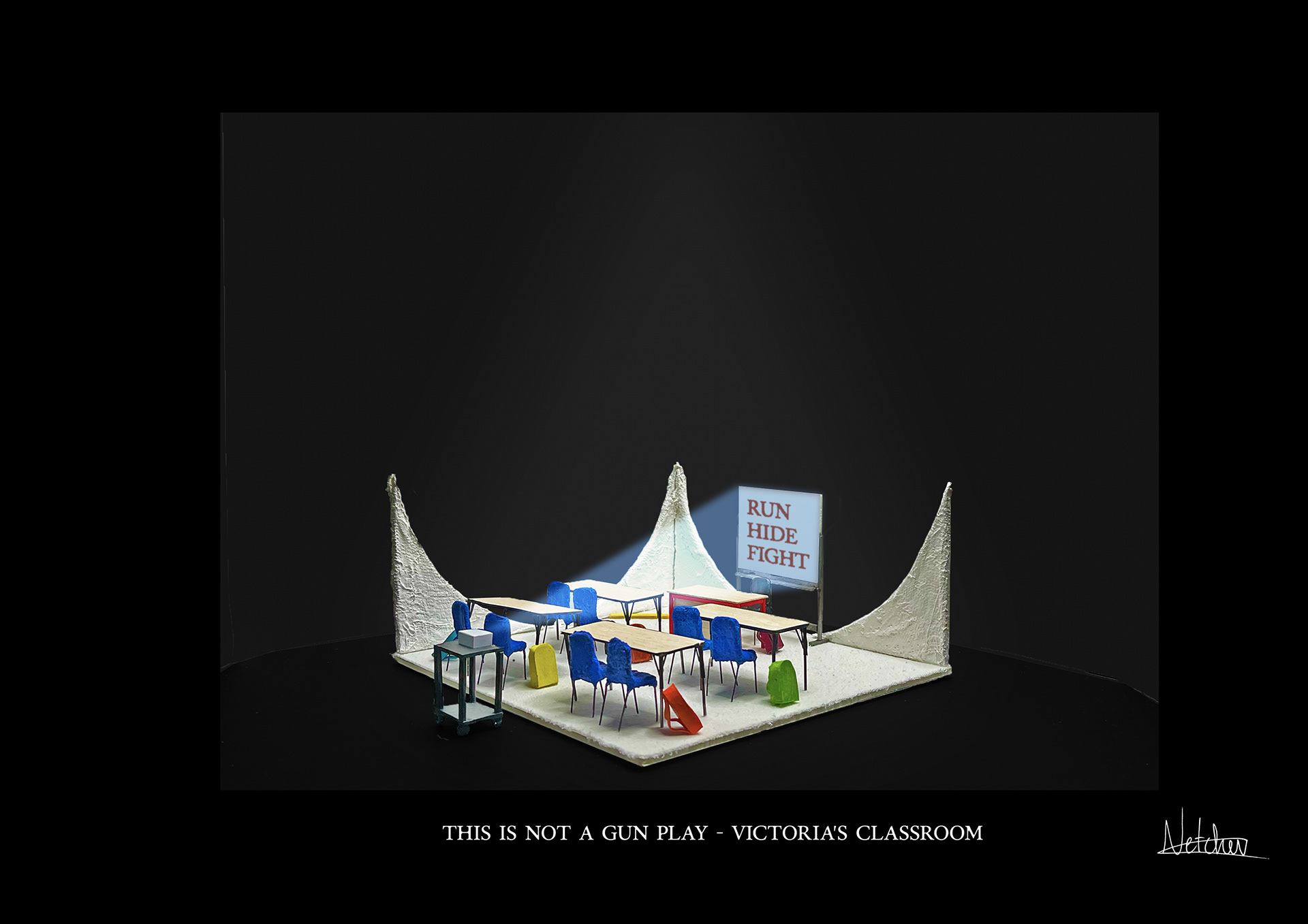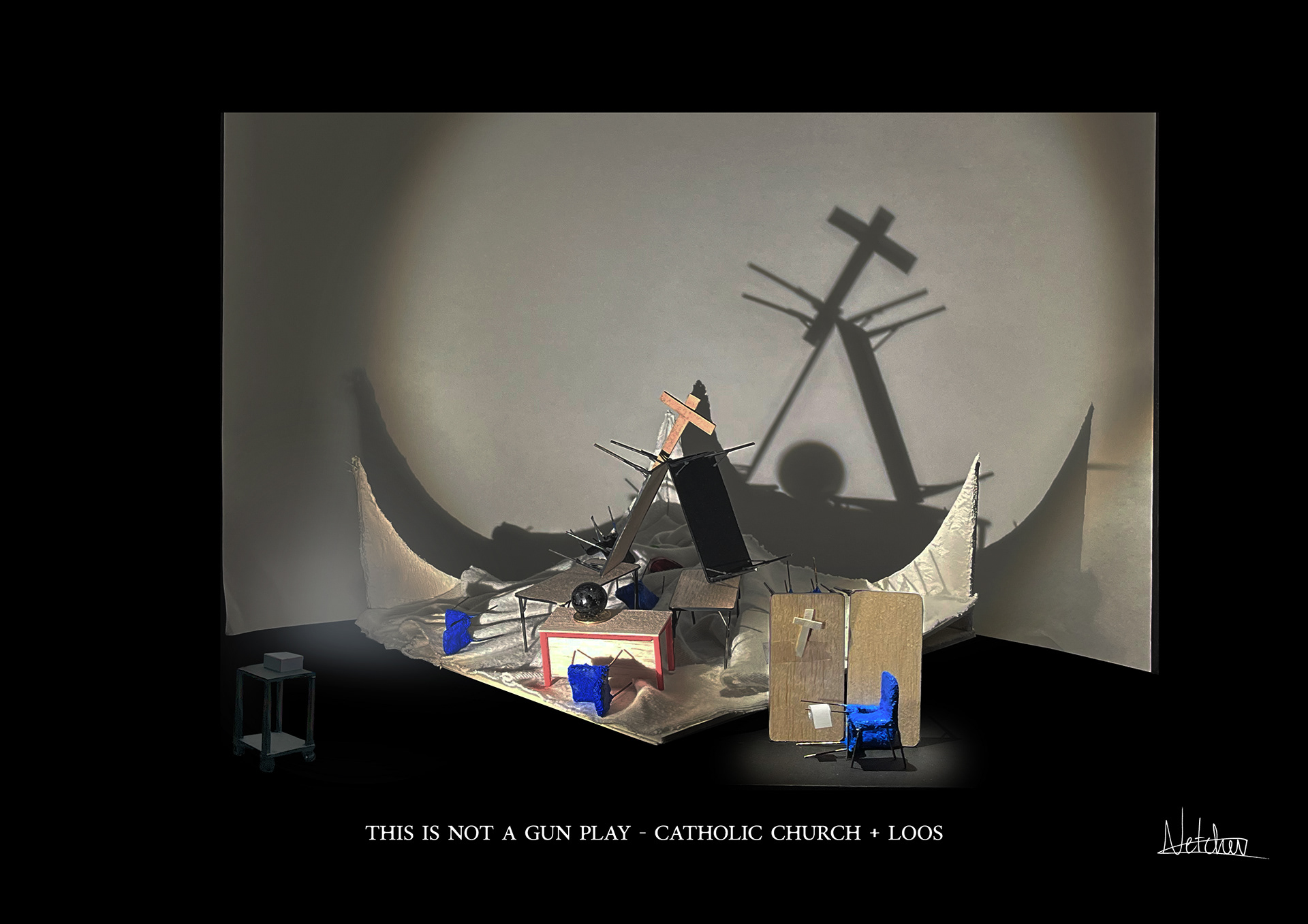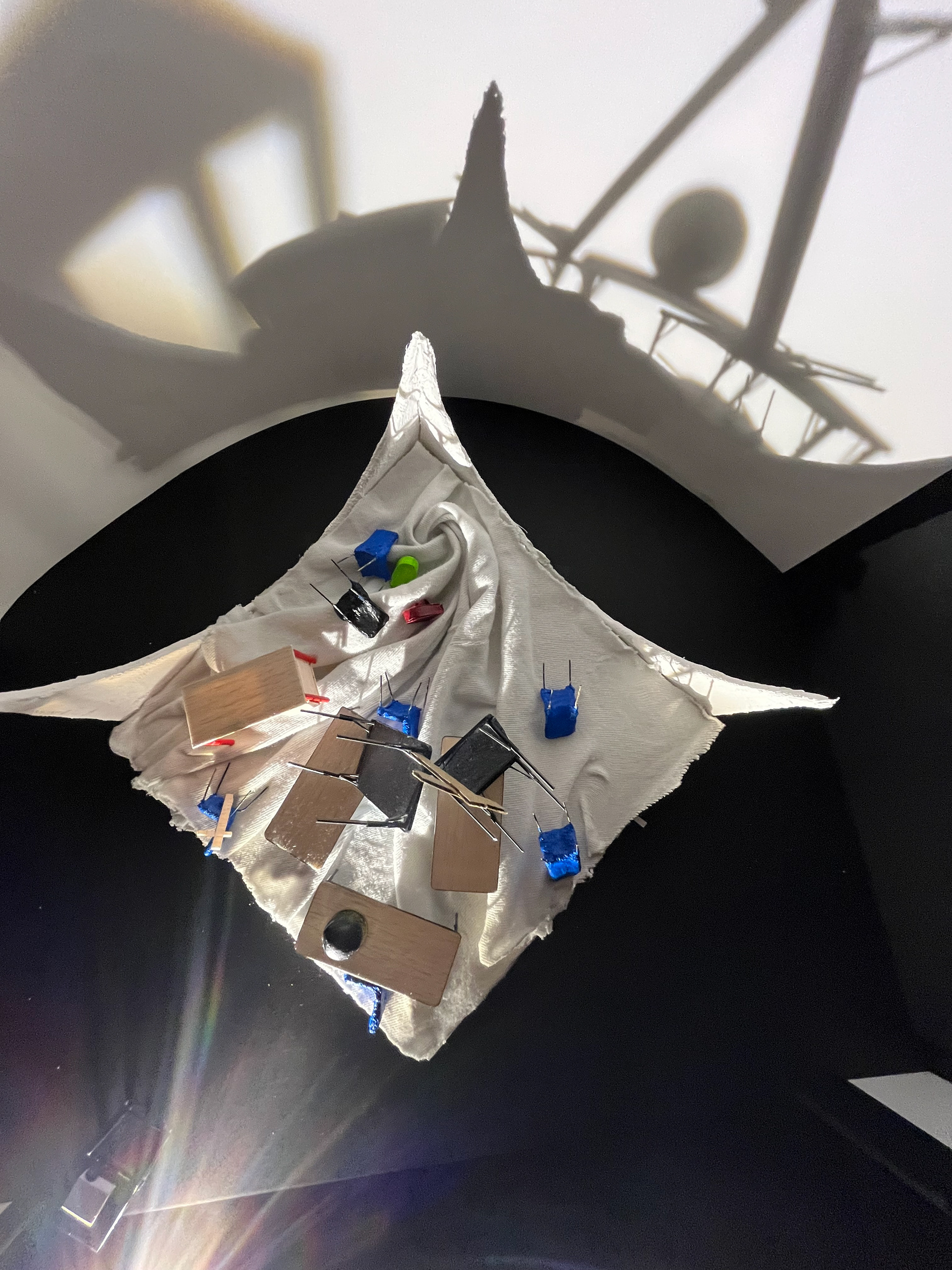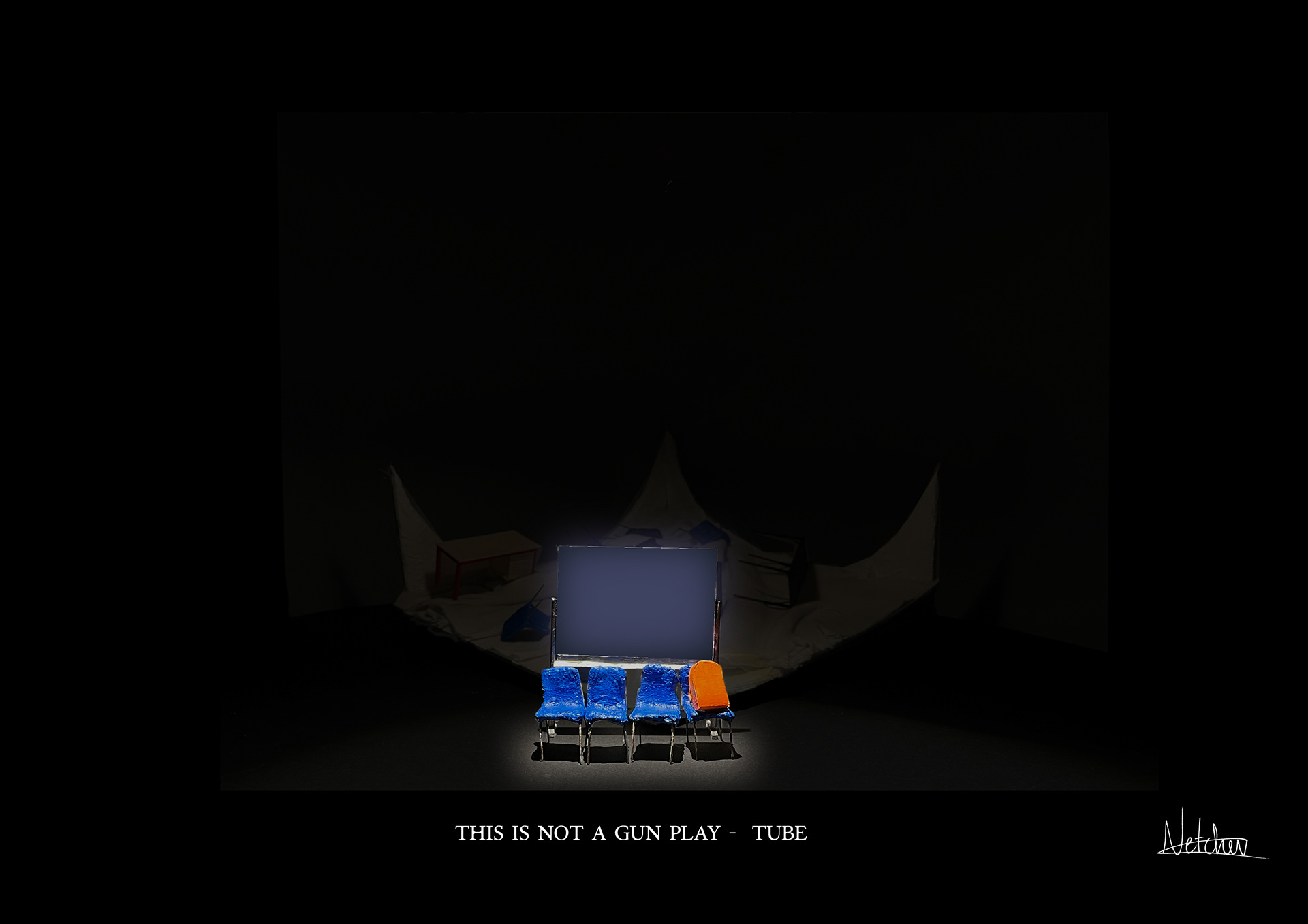Play by Caroline Lezny
"Set in an alternate-reality Britain where guns are carried legally, where school shootings and lockdown drills are a fact of life, one young teacher decides to keep her students alive."
This is a design concept and model box, I constructed for Masterclass’ Script Scratch event.
In this play, we follow teacher Victoria and her story within three timelines: 2013 (in school, where she witnesses a school shooter), 2019 (engaged to a partner who will pass due to a gun violence incident), and 2023 (modern-day teaching).
Towards the end of the play when Victoria ends up taking out a gun, there is a stage direction that describes a graviational pull forming towards it. I was highly inspired by the idea of a whirlpool: two opposing currents drifting toward each other and entangling violently to pull everything inwards. This is much like the gun ownership debate, nonetheless, people still get caught in the whirlpool and suffer. This visual truly clicked for me once I also realized that it mimicked the inside of a gun barrel.
I then was inspired by “apophenia”: recognizing shapes in objects that are not those shapes. I also did a lot of research on the state of classrooms after school shootings. These horrific images showcased different barricades that students used to protect themselves. Chairs, tables, and backpacks thrown into clusters, formed in moments of absolute horror and fear. Throughout the play, Victoria is haunted by the horrible events in her past. The classroom follows her and becomes the only realistic place on stage. As we travel in time the stage swirls and the objects of the classroom morph to represent the spaces. They would morph both through the diegetic light of the classroom projector and other barricades.
Towards the end when Victoria pulls out a gun and starts pointing it towards the audience, questioning them and asking them where they would hide. The idea is that this gun would be hidden within the center of the whirlpool onstage.
In this play, we follow teacher Victoria and her story within three timelines: 2013 (in school, where she witnesses a school shooter), 2019 (engaged to a partner who will pass due to a gun violence incident), and 2023 (modern-day teaching).
Towards the end of the play when Victoria ends up taking out a gun, there is a stage direction that describes a graviational pull forming towards it. I was highly inspired by the idea of a whirlpool: two opposing currents drifting toward each other and entangling violently to pull everything inwards. This is much like the gun ownership debate, nonetheless, people still get caught in the whirlpool and suffer. This visual truly clicked for me once I also realized that it mimicked the inside of a gun barrel.
I then was inspired by “apophenia”: recognizing shapes in objects that are not those shapes. I also did a lot of research on the state of classrooms after school shootings. These horrific images showcased different barricades that students used to protect themselves. Chairs, tables, and backpacks thrown into clusters, formed in moments of absolute horror and fear. Throughout the play, Victoria is haunted by the horrible events in her past. The classroom follows her and becomes the only realistic place on stage. As we travel in time the stage swirls and the objects of the classroom morph to represent the spaces. They would morph both through the diegetic light of the classroom projector and other barricades.
Towards the end when Victoria pulls out a gun and starts pointing it towards the audience, questioning them and asking them where they would hide. The idea is that this gun would be hidden within the center of the whirlpool onstage.
Model Making:
We were given a small budget for the modelbox so I got creative. I used an old white T-shirt for the floor to represent a white carpeted floor. I realized that thinner shirt fabric was also the easiest to spin into a whirlpool. I also used cut-up plaster sheets and molded them to some iron wire to create the classic blue classroom chairs found in British and American schools. I used the leftover plaster to create edges of walls (that were once whole). I used wooden pieces for the table tops and metal wire for their legs. To add the "rubbery" texture to the side of the table and part of the legs, I wrapped black electric tape.



TOP VIEW IN MODEL
